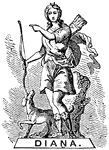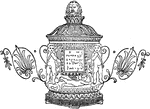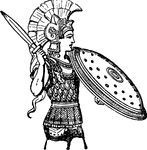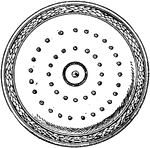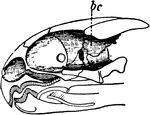
Demosthenes
"In the oratory of more thn two thousand years Demosthenes stands in the front rank, and will always…
!["Demosthenes had established himself as a public speaker before [the first Phillipic]; but it is chiefly in connection with Phillip that we are to view him as a statesman as well as an orator." — Smith, 1882](https://etc.usf.edu/clipart/16600/16602/demosthnbust_16602_mth.gif)
Bust of Demosthenes
"Demosthenes had established himself as a public speaker before [the first Phillipic]; but it is chiefly…

Sculpture of Demosthenes
Demosthenes was a prominent Greek statesman and orator of ancient Athens. His orations constitute a…
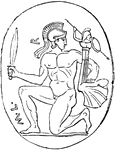
Diomede
"The following cut, from an ancient gem, represents Diomede in the act of bearing away the Palladium."…

The Discus Thrower
Also known as Discobolus. The Discus Thrower is a famous, ancient bronze statue that demonstrates a…

Greek Dish
This Greek dish is made out of yellow clay and painted in red. It has a geometrical design ornamented…

Greek Dish
This Greek dish is a kylix used as a drinking cup. Made out of yellow clay, it is decorated in brown…
Greek Dish
This Greek dish is made out of yellow clay and painted in brown and red. It has a geometric design on…
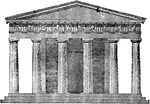
Doric Temple
"The front elevation of a Greek Doric Hexastyle-peripteral Temple." — Encyclopedia Britanica,…
Double Pipes
"Ancient Greek Double Pipes. Elgin Collection, British Museum." — The Encyclopedia Britannica,…
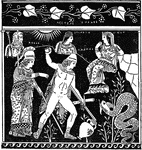
Cadmus and the Dragon
"Cadmus and the Dragon. (From a vase-painting at Naples.)" — The Delphian Society, 1913

Earring
"The earring is an exquisite illustration of Greek skill in the introduction of the human figure; the…

Greek Earring
This Greek earring is made out of gold in the form of a siren (Greek mythical bird-woman). It was found…

Epicurus
Epicurus was an ancient Greek philosopher and the founder of the school of philosophy called Epicureanism.…
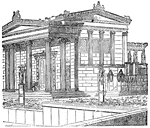
Erechtheum restored
"The building of the new Erechtheum was not commenced till the Parthenon and Propylea were finished,…

Euripides
"Euripides was born in the island of Salamis, in B.C. 480, his parents having been among those who fled…
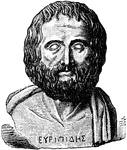
Euripides
"The next evolution is presented in Euripides. He is less ideal than his predeccesor, but truer to nature.…
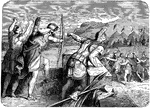
Astor to Philip's Right Eye
"It was during the siege of Methone that Philip had the misfortune to lose on of his eyes. A random…
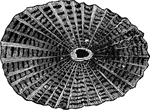
Greek fissurella
"The Greek Fissurella, F. Græca, is found in the Mediterranean and the Indian Ocean.…

Greek Folding-Chair
The Greek Folding-Chair could be folded together, takes up less room and is conveniently transported.
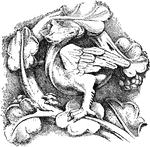
Foliate Sculpture
Foliate Sculpture of the 13th Century. "Decorative sculpture conventionalized more or less from foliage,…
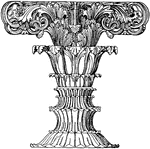
Finial Foliated Shaft
The finial foliated shaft is a Greek design of the choragic monument of Lysikrates in Athens.
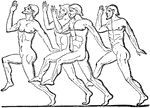
Foot-race
"The Olympic games were of greater efficacy than the Amphictyonic Council in promoting the spirit of…
Double Pattern Fret Band
The double pattern fret band is a Greek design. It is the same pattern that is doubled in the band.

Ordinary Intersecting Fret Band
The ordinary intersecting fret band is a pattern that crosses each other, found on Greek vase paintings.

Ordinary Intersecting Fret Band
The ordinary intersecting fret band is a pattern that crosses each other, found on Greek vase paintings.

Ordinary Intersecting Fret Band
The ordinary intersecting fret band is a pattern that crosses each other, found on Greek vase paintings.

Ordinary Intersecting Fret Band
The ordinary intersecting fret band is a pattern that crosses each other, found on Greek vase paintings.
Ordinary Intersecting Fret Band
The ordinary intersecting fret band is a pattern that crosses each other, found on Greek vase paintings.

Ordinary Intersecting Fret Band
The ordinary intersecting fret band is a pattern that crosses each other, found on Greek vase paintings.

Ganymede
"Hebe was dismissed from her office in consequence of a fall which she met with one day when in attendance…
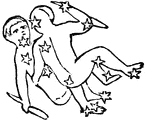
Gemini
"The third sign of the zodiac, so named from its 2 brightest stars, Castor, of the 1st magnitude, farthest…
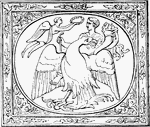
Apotheosis of Germanicus
"By a beautiful image, the mother herself, who is so deeply interested in the fortunes of her son, is…

Group of Gods and Goddesses
"The chief gods, in striking contrast with the monstrous divinities of the Oriental mythologies, had…

An Athenian Gravestone
"A relief on the tomb of a certain Hegeso. It represents a woman, seated, taking a jewel from a casket…

Greaves and shield
"Represents the interior view of a bronze shield and a pair of greaves. These greaves are made right…
Grecian Banner
"Greek architecture is distinguished for nothing more than for the grace and beauty of its mouldings;…
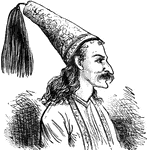
Greek
"The Greeks belong to the great Indo-European race, who from the earliest times have been the conquerers…

Greek Coin
"In the reign of Philip of Macedon, the coinage of Greece had attained its full development, having…

Greek philosophers
"Greek Philosophy, which reached its highest excellence in Athens in the fourth century before Christ,…
Greek Soldiers in Arms
"From a Greek vase of about the time of the battle of Marathon."—Webster, 1913

Greek War-Ship with Three Rows of Oars
Illustration of a Greek war-ship from the 5th century BC. There are two masts, a large decorative bird…

